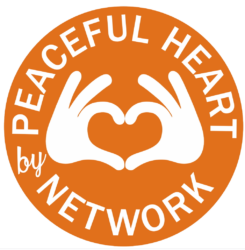Emotions are the language between the soul, mind and body. When we learn to understand them instead of avoiding of sedating the negative emotions, we will release a lot of stress and create balance.
These are ten essentials of Emotional Literacy
1. Understanding mental health in relation to social context
Our capacity to handle stress is related to the present social context and situation – a new environment can trigger the nervous system in a “new” way. Stress is not like a broken leg that is just as broken regardless of where the person is – it is a reaction to a situation and social context that triggers a response there fore it is important to create a context where people feel safe and can relax.
2. Understanding stress and trauma
Stress is invisible and hard to identify. To know and be able to identify signs of stress is to be able to self calibrate. To understand the mechanics of stress and trauma is to be able to understand how to work with and help people suffering from this.
3.Avoiding transference of trauma – Secondary trauma
Both stress and trauma can be transferred from one person to another – similar to how a virus is spread. There are hygienic approaches to mental health – in effect there are precautions we all need to take take to prevent stress from building up and spreading or how we can avoid catching it from others.
4. Flashbacks/ Flashbulb memories
When we experience a flashbulb memory, or flashback, it is like we are temporarily displaced from the reality of now and react through a filter of the past. A person in this state needs to be brought back into now and to a sense of safety. This can be done with grounding techniques.
5. The health care pyramid
There are many things that can be done without experts. If we turn the pyramid of health care up side down allowing everybody to be a part of the solution many more will be helped. Article>>
6. Physical and mental resilience
To have resilience is to be able to handle and bounce back from stressful situations. Resilience can be trained. One way is to know how to secure enough sleep, food , water and exercise. Already after a few days without sleep we risk poorer judgement, and in the long run psychosis. Knowing how to access a moment of deep relaxation by self regulation can be a vital help. Being prepared mentally for things that can happen creates empowerment and resilience.
7. Social context
Human beings are social creatures. Creating a safe social context is a key component of preserving, healing and maintaining mental health. There are simple ways of integrating this into daily routines.
8.Adopting an attitude of empowerment
How we approach helping others will affect how we can handle our workload and difficulties. It is shown through research that we handle these situations better when we come from a position with
• Meaning
• Humbleness
• Acceptance
• Curiosity
9. Culture and communication
Always take local culture and ways of communication into consideration, or as we say “ Take off your shoes and listen”. Listening and asking before imposing or offering help are key elements.
10. Practical techniques
A grounding technique is a way to quickly help an individual that is slipping into an extreme stress reaction.
A.Self stabilization
B.Group exercises in the organization and partner organizations
C.Reaching out to others with First Aid for stress and trauma

